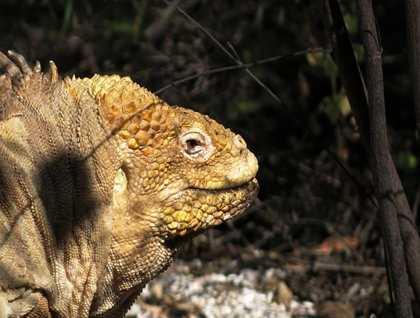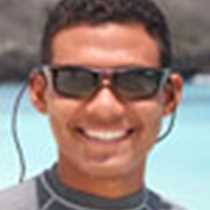After a calm night spent near a protected cove, at first light we navigated a short distance south to rich Urbina Bay, at the base of Alcedo Volcano, one of the six shield volcanoes of Isabela Island. In 1954, one and one half square kilometers of the marine reef off the coast of Urbina Bay was uplifted almost instantaneously, more than 15 feet, leaving all sorts of marine creatures above the water level, exposed to the air and sun. After 50 years, we can still see evidence of this occurrence and the magnitude of the event.
Isabela, the largest island in the Galápagos group, makes up just over half the total surface area of the archipelago. This island has been the focus of a significant and successful program in the ecological restoration of the islands, The Isabela Project. This program was created to eradicate feral goats and donkeys, introduced animals that were at one point a serious threat for the unique flora and fauna of the island. The project, supported by Lindblad Expeditions-National Geographic through guest donations, was successful beyond all hopes and now with our guests, we can see wild tortoises and colorful healthy land iguanas along the trails.
After visiting this area, and seeing those iconic animals that look prehistoric, it was time to cool off and enjoy the water at the beach and for our young explorers to learn how to drive our Zodiacs. Then back on board, we had the chance to learn more about the human history of the islands and the gastronomic delicacies of the Ecuadorian food at lunch time.
The afternoon took us back north a few miles to visit the historic bay of Tagus Cove where wayfarers over the centuries have sought and found a sheltered harbor and easy access to the island. Some interesting historic graffiti can be found near the landing, and this area is perfect to be explored by kayaks, Zodiac rides, snorkeling, and a challenging hike to the top of Darwin Lake, the same that Charles Darwin found when he visited the Islands in 1835.
Our day was full with different activities and lots of information and experiences to digest and organize. At cocktail hour we had a couple of very interesting recaps about the underwater world and the importance of mangroves in our ecosystems, and to end the days in the best way, our young explorers had the best time on board, with pizza and movies!






